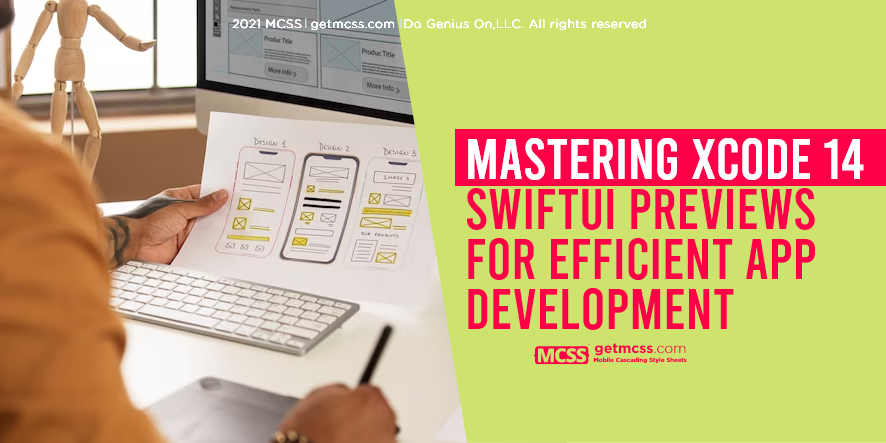As an expert mobile app developer, understanding and mastering the latest development tools is essential for creating high-quality applications. With the introduction of Xcode 14, SwiftUI previews have become a powerful feature for iOS developers. This article will delve into the key aspects of SwiftUI previews and how they can streamline your app development process.
1. The Power of SwiftUI Previews
SwiftUI previews in Xcode 14 allow developers to visualize and interact with their code in real-time, making it easier to design and fine-tune user interface elements. By using SwiftUI previews, you can:
-
Quickly see the impact of code changes without running the app on a simulator or device
-
Customize the layout and appearance of your previews
-
Use various preview modifiers to add functionality
-
Debug and troubleshoot issues in your code
2. Previewing Your SwiftUI Code
To make the most of SwiftUI previews, it's crucial to learn how to effectively navigate and use the preview window. Some key tips for previewing your SwiftUI code include:
-
Click on the Resume button to render the preview if it's not automatically displayed
-
Use the previewProvider property to display the desired SwiftUI view
-
Click and drag within the preview to modify the view's position
3. Customizing Preview Layouts
Xcode 14 allows you to customize the layout and appearance of your SwiftUI previews. To enhance your previews, you can:
-
Change the device, orientation, and color scheme using the preview environment settings
-
Use the .previewLayout() modifier to specify the preview size and layout
-
Apply the .preferredColorScheme() modifier to switch between light and dark modes
4. Leveraging Preview Modifiers
Preview modifiers are essential for adding functionality to your previews. Some useful preview modifiers include:
-
.previewDevice(): Specify a specific device type for the preview
-
.environmentObject(): Inject environment objects into the preview
-
.navigationViewStyle(): Apply different navigation view styles
5. Debugging with Previews
SwiftUI previews can also be used to debug and troubleshoot your code. To do this:
-
Place breakpoints within your SwiftUI code
-
Use the Debug Preview option in the preview window to run the preview with breakpoints active
-
Inspect variables and step through code execution to identify and resolve issues
6. Live Previews and Interactions
Xcode 14 introduces the live preview feature, which enables developers to interact with their SwiftUI views in real-time. To make the most of live previews:
-
Click the Play button in the preview window to start the live preview
-
Interact with your SwiftUI views to test gestures, animations, and other UI elements
-
Make code adjustments on the fly and see the results immediately
By mastering Xcode 14 SwiftUI previews, developers can create more efficient, polished, and user-friendly iOS applications.
While it is true that these recommendations help application developers to create well-debugged and tested applications. With the use of MCSS (Mobile Cascading Style Sheets) that offers a low-code framework, which helps to offer more attractive and quality apps, let's remember that nowadays we not only have to create functional apps but also attractive ones because an attractive and pleasant application will attract new users. MCSS helps us reduce the customization time of our applications by up to 40%.

